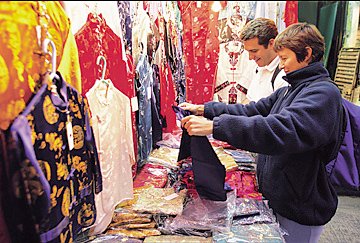
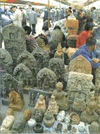
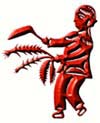
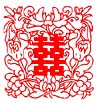
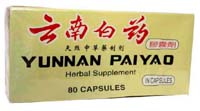
A large antiques market is the Antiques City at Panjiayuan. This is a multi-story building which is full of antiques and general kitsch. The same rules apply here as in Liulichang: if you like it , get it. Don't worry if it is fake or not. Many of the things are not real antiques, but on the other hand, recently a 50,000-year-old fossil was confiscated from one of the sellers there. The fossil was on sale for about US$150, so you never know.
Papercutting is one of the most popular handicrafts in Beijing. There is a wider variety of papercutting patterns than you can imagine available.
Kites can be used as ornaments and toys. One of China's favorite past times is flying kites, especially in Beijing where there is usually plenty of wind around to send them soaring into the sky. Available in many art and craft stores, kites are among the best Chinese presents to friends back home.